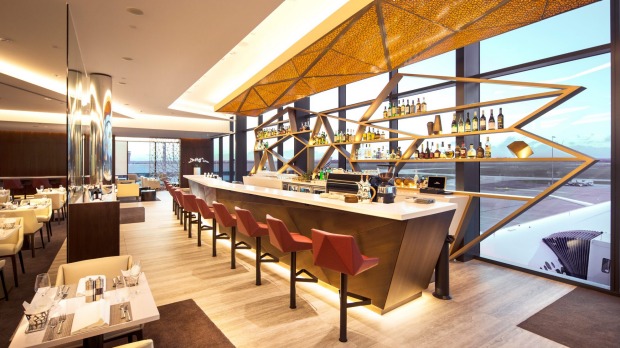
Young asian tourist rushing to board a plane on the departure area Photo: Getty Images/iStockphoto
Ever been on a delayed flight with a tight connection coming up and wondering if you’re going to make it? It’s stress you don’t need. Right now, when flight delays are all too common, it’s bringing more stress to more travelers.
In a sign of the times, Qantas has just raised its connection times for passengers transferring from a domestic to an international flight. Instead of 60 minutes, the airline will soon have a minimum connection time (MCT) of 90 minutes. The move comes as Qantas struggles with baggage handling delays caused by staff shortages. It’s taking longer to transfer checked luggage between aircraft, but another reason is the ongoing problems with flight delays. Qantas has just posted the worst on-time performance of any carrier in June 2022, with almost half its flights delayed or cancelled, and therefore more time is required between flights.
Minimum connection time
If your journey involves a connection you might be tempted to catch an earlier flight to allow for delays, but how much time should you allow? The answer is the MCT, the least amount of time required for you to get from your arriving flight to your next flight at the transfer point, and for your airline to do the same.
As a rule of thumb, the MCT is 60 minutes between domestic flights, 90 minutes between international flights, but it’s not the same for all airports and in all situations. For example if you arrive on an international flight at Sydney Airport and you’re transferring to a domestic flight, you need to get to the domestic terminal which is several kilometers away. As well as the journey time, you might have to wait up to 30 minutes for the T-Bus service which connects the terminals. That’s on top of the time it takes to collect your baggage and pass through immigration and customs, then check in for your next flight. Even 90 minutes might be cutting it fine. An MCT of 2½ hours is more realistic. By contrast, once you’ve collected your luggage and cleared immigration and customs, transferring between domestic and international flights at Melbourne Airport requires only a short walk. Any change of aircraft that involves domestic-to-international or vice versa requires an MCT of at least two hours. When things are likely to go wrong, such as the baggage handling problems currently experienced at many Australian airports, add another 30 minutes.
However things can get even more complicated. When you take a flight with a stop somewhere in between, you’re usually traveling on a single ticket with the same Passenger Name Record (PNR) for the entire journey. In most cases, it’s the responsibility of the airline you’re booking with or your travel agent to make sure your MCT is sufficient. If you don’t make that connecting flight through no fault of your own, it’s up to the airline to make things right and get you to your final destination as quickly as possible. That applies even if your journey involves different airlines, provided you’re traveling on a single ticket.
But that might not be the case. Say for example you’ve booked a cheap flight to Singapore then made another booking on a different airline to Paris. That’s a split ticket, one flight ticket for each sector. Assuming you have checked baggage you’re going to need to retrieve it in the baggage claim area at Singapore’s Changi Airport and check it in for your next flight. Even though you’re not going outside the terminal, that means passing through Singapore immigration, collecting your bag and going through customs before you can head for departures and check yourself and your baggage in for your Paris flight. Afterwards you’ll need to get through immigration and security before heading to your departure gate, and that’s going to take some time. Exactly how long depends on several variables – the queues at immigration, how long it takes for your checked luggage to arrive, the time it takes to check back in – but anything less than three hours could mean you miss your Paris flight.
If you’re traveling on a split ticket and you don’t make your connecting flight, you’re then regarded as a ‘no-show’ and subject to whatever penalties your airline applies. It could be the total loss of whatever you’ve paid, even if you’ve missed that connecting flight through no fault of your own, for example if your first flight is late in arriving at the transit stop. Worse still, missing one sector of a flight ticket means that all subsequent sectors on the same booking are automatically cancelled. If after Paris you were booked to fly to Athens on the same booking, that booking no longer exists.
See also: Eight Australian airport lounges you can enter without flying business class
See also: Everything you need to know about coping with the current travel chaos
.






